
What is computer coding? This simple animation explains and illustrates this concept to young learners. [1:08]
- Subject:
- Computer Science
- Mathematics
- Technology
- Material Type:
- Audio/Video
- Provider:
- Rumbus Animation
- Date Added:
- 08/01/2022

What is computer coding? This simple animation explains and illustrates this concept to young learners. [1:08]

Students illustrate and write out notes for a plan (or several plans) to mitigate the effects of a local weather hazard.

Use the engineering design process to create a solution to problem involving magnets?
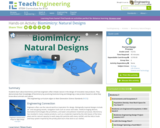
Students learn about biomimicry and how engineers often imitate nature in the design of innovative new products. They demonstrate their knowledge of biomimicry by practicing brainstorming and designing a new product based on what they know about animals and nature.

Students design and construct devices to trap insects that are present in the area around the school. The objective is to ask the right design questions and conduct the right tests to determine if the traps work .
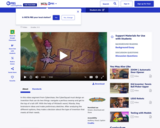
Cyberchase video in which the CyberSquad uses the design process to create an invention that will help them navigate some tricky terrain. Includes background reading and discussion questions. [3:52]
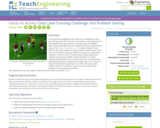
Student teams follow the steps of the engineering design process to meet the challenge of getting their entire class from one location on the playground to the sidewalk without touching the ground between. The class develops a well thought-out plan while following the steps of the engineering design process. Then, they test their solution by going outside and trying it out. Through the post-activity assessment, they compare their problem-solving experience to real life engineering challenges, such as creating new forms of transportation or new product invention.
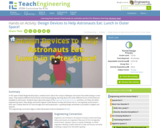
Students learn about the unique challenges astronauts face while eating in outer space. They explore different food choices and food packaging. Students learn about the engineering design process, and then, as NASA engineering teams, they design and build original model devices to help astronauts eat in a microgravity environment --- their own creative devices for food storage and meal preparation.
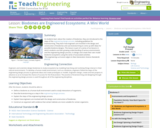
As students learn about the creation of biodomes, they are introduced to the steps of the engineering design process, including guidelines for brainstorming. Students learn how engineers are involved in the design and construction of biodomes and use brainstorming to come up with ideas for possible biodome designs. This lesson is part of a series of six lessons in which students use their growing understanding of various environments and the engineering design process, to design and create their own model biodome ecosystems.
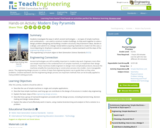
Students investigate the ways in which ancient technologies six types of simple machines and combinations are used to construct modern buildings. As they work together to solve a design problem (designing and building a modern structure), they brainstorm ideas, decide on a design, and submit it to a design review before acquiring materials to create it (in this case, a mural depicting it). Emphasis is placed on cooperative, creative teamwork and the steps of the engineering design process.

Learn how to sketch for design during the engineering process. [4:25]

Learn how engineering can help you solve every day problems. [3:55]

The difference between an architect and an engineer is sometimes confusing because their roles in building design can be similar. Students experience a bit of both professions by following a set of requirements and meeting given constraints as they create a model parking garage. They experience the engineering design process first-hand as they design, build and test their models. They draw a blueprint for their design, select the construction materials and budget their expenditures. They also test their structures for strength and find their maximum loads.
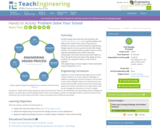
Students apply what they have learned about the engineering design process to a real-life problem that affects them and/or their school. They chose a problem as a group, and then follow the engineering design process to come up with and test their design solution. This activity teaches students how to use the engineering design process while improving something in the school environment that matters to them. By performing each step of the design process, students can experience what it is like to be an engineer.
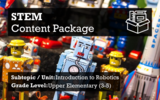
This content package is a curated collection of STEM instructional resources to support the introduction and exploration of programming and robotics in grades 3-5. Resources include lesson plans, engagement activities, ebooks, digital texts, and videos.
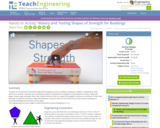
Students are introduced to brainstorming and the design process in problem solving as it relates to engineering. They perform an activity to develop and understand problem solving with an emphasis on learning from history. Using only paper, straws, tape and paper clips, they create structures that can support the weight of at least one textbook. In their first attempts to build the structures, they build whatever comes to mind. For the second trial, they examine examples of successful buildings from history and try again.

In this video, mechanical engineer Amy Smith explains the design process for an innovation that enables people in isolated villages to determine whether their water supplies are free of dangerous bacteria. Included are teaching tips and additional background information. [5:52]

In this video segment from Cyberchase, learn about the importance of creating a model as the CyberSquad designs a giant "Trojan Ducky" that will help them enter a fort without being noticed. [4:17]

This video segment adapted from "Building Big" outlines the step-by-step design process used by engineers. Includes background reading, discussion questions, and teaching tips. [4:50]

Each part of the engineering design process, which is fundamental to any successful project, is illustrated in this video segment. This resource is useful for introducing components of Engineering Design (ETS) from the Next Generation Science Standards (NGSS) to grades 3-12 students. Included are teaching tips and additional background information. [4:50]